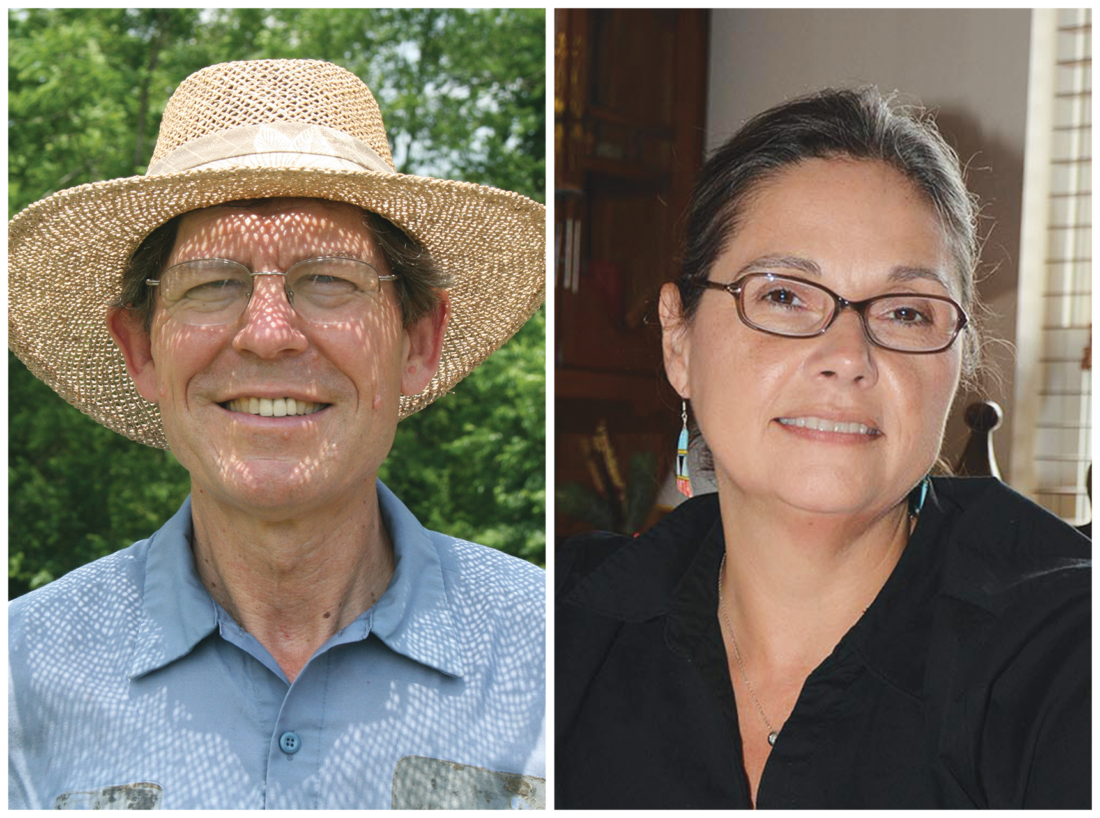Native American history is invisible to many and poorly understood by most, says David Moore, a professor of anthropology at Warren Wilson College. But when you look at the challenges that tribes in the region faced for over 500 years, he maintains, “Resilient is the only way to describe them.”
November is National Native American Heritage Month. To celebrate, the Swannanoa Valley Museum & History Center will host a series of events, including a pair of webinars led by Moore and fellow scholar Brooke Bauer, an assistant professor of history and Native American studies at the University of South Carolina Lancaster.
For too long, says Saro Lynch-Thomason, the museum’s assistant director, “We’ve learned our history from the perspective of the settlers.” Consequently, she continues, Native accounts have either been ignored or completely replaced by a “distorted settler/colonial mythology.”
In addition to the upcoming discussions, Lynch-Thomason hopes the museum’s latest exhibit will expand the community’s understanding of the region’s history. “Unearthing Our Forgotten Past: Fort San Juan” runs through April.
“Native culture is alive and ongoing and evolving,” she notes. “And I hope these presentations offer some perspective on how nonnative people can be an ally.”
Wholly in control
Moore’s hourlong webinar, “Trade, Recruitment and Rebellion: Native Mediation of Spanish Colonization,” will consider three critical events tied to the Juan Pardo expeditions of the 1560s, with a focus on how early Cherokee, Sara, Wateree, Catawba and other Native tribes engaged with the Spanish conquistadors.
“These were people that, for millennia, had negotiated their existence in territories with other peoples,” Moore explains. “I think most Americans have this idea that Native Americans just sort of gave up.”
The first incident Moore plans to discuss is the establishment, in 1567, of Fort San Juan in the Native town of Joara, situated near present-day Morganton. Moore and a team of archaeologists spent decades searching for evidence of the site’s existence before locating it in 2013. (For more, see “Evidence of Pre-Colonial Spanish Soldiers Reshapes WNC History,” June 30, 2017, Xpress)
“It’s the only major excavation in the region,” notes Moore.
Among the questions he’ll address is why the townspeople agreed to let the fort be built there in the first place. “It’s not about Native peoples just giving over their agency to new people,” he explains. “They are wholly in control.”
And that control was on full display when, in May 1568, the people of Joara burned down the fort, killing all but one of the Spanish soldiers stationed there. In addition to considering the factors that precipitated the conflagration, Moore will address the resistance Pardo’s reinforced expedition subsequently faced as it ventured westward.
The region’s Native peoples, stresses Moore, “were certainly not passive. They were constantly thinking and trying to understand the best way to respond.”
Influential women
Although Bauer’s talk will shift the focus to events several centuries later, “Crisis in Catawba Territory: Catawba Indian Women’s Interactions with Catawba and Non-Catawba Men, 1789-1828” will hit on similar themes of autonomy and self-determination.
A member of the Catawba Indian Nation, Bauer grew up in Rock Hill, S.C., and often heard tales of her tribe’s history.
“I remember my grandmother sitting in her front yard in the middle of the summer heat building pots,” she says. “And a number of the women in the tribe would come and visit with her, and they’d sit under this huge oak tree, and I’d hear snippets about Sally New River,” a tribal member of noble descent.
Bauer’s webinar will focus heavily on New River’s life and contributions as a way to explore the role Catawba women played in the late 18th and early 19th centuries.
In 1796, the Catawba leaders deeded the tribe’s remaining 500 acres to New River. The decision, Bauer explains, reveals how the Catawbas used the American legal system to protect their territory from the encroachment of white settlers while remaining true to the tribe’s custom of placing women in charge of land management.
Along with planting and harvesting large gardens and orchards, Catawba women raised children, prepared ointments, built homes, learned self-defense and played a crucial role in creating and selling pottery.
“They weren’t just standing on the sidelines waiting for history to be enacted upon them,” stresses Bauer. “They jumped right into the middle of it.”
As an example, she cites the evolution of Catawba pottery. As more European settlers arrived in the area, Catawba women adapted certain designs to appeal to a broader audience. “They did this intentionally,” the historian explains, “because they needed a way to help provide for their families.”
We’re still here
Both speakers hope their upcoming presentations will help drive home the region’s complex history. The popular notion is that white settlers’ arrival in the Piedmont in the late 18th and early 19th centuries played out with relative ease.
“But it’s not so simple a story,” Moore contends. An entire history preceded the Europeans’ appearance there, marked by various political, social, economic and environmental obstacles. Together with the smallpox introduced by the Spaniards, those factors led to a sharp decline in the area’s Native population.
And despite the challenges that her ancestors faced, Bauer wants her Nov. 16 webinar to make one thing clear — when it comes to the Catawba Indian Nation, “We’re still here.”



Before you comment
The comments section is here to provide a platform for civil dialogue on the issues we face together as a local community. Xpress is committed to offering this platform for all voices, but when the tone of the discussion gets nasty or strays off topic, we believe many people choose not to participate. Xpress editors are determined to moderate comments to ensure a constructive interchange is maintained. All comments judged not to be in keeping with the spirit of civil discourse will be removed and repeat violators will be banned. See here for our terms of service. Thank you for being part of this effort to promote respectful discussion.